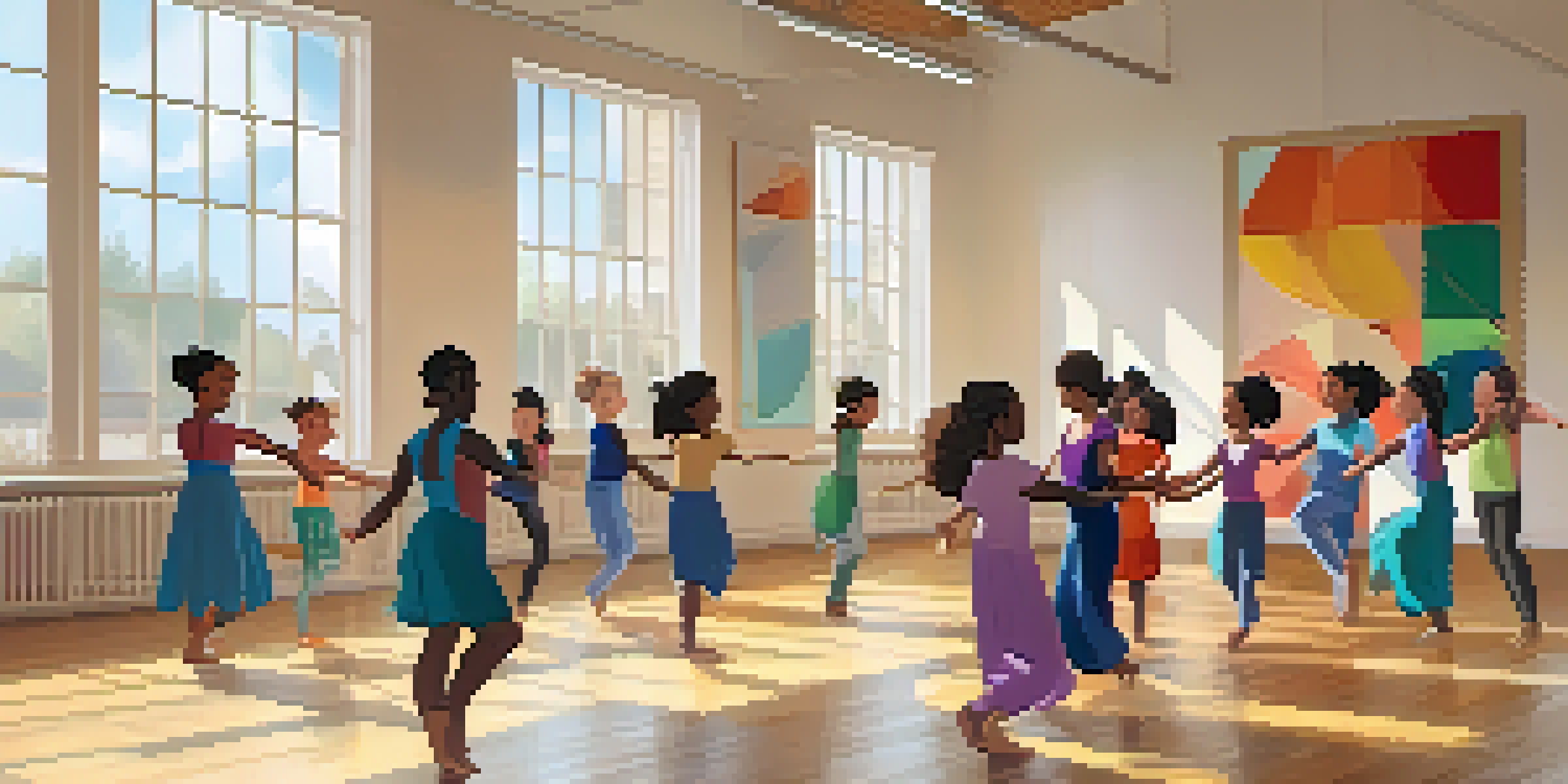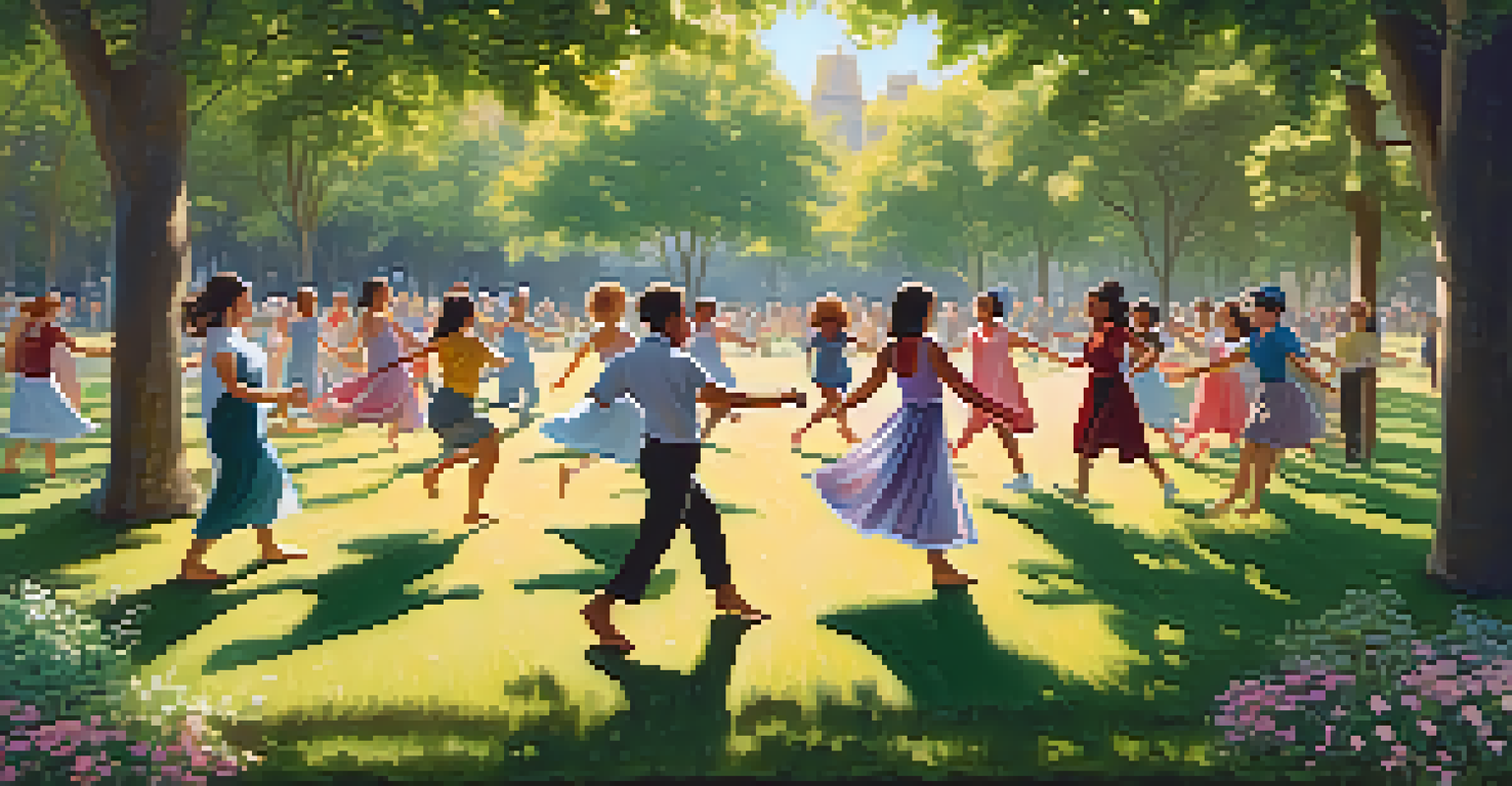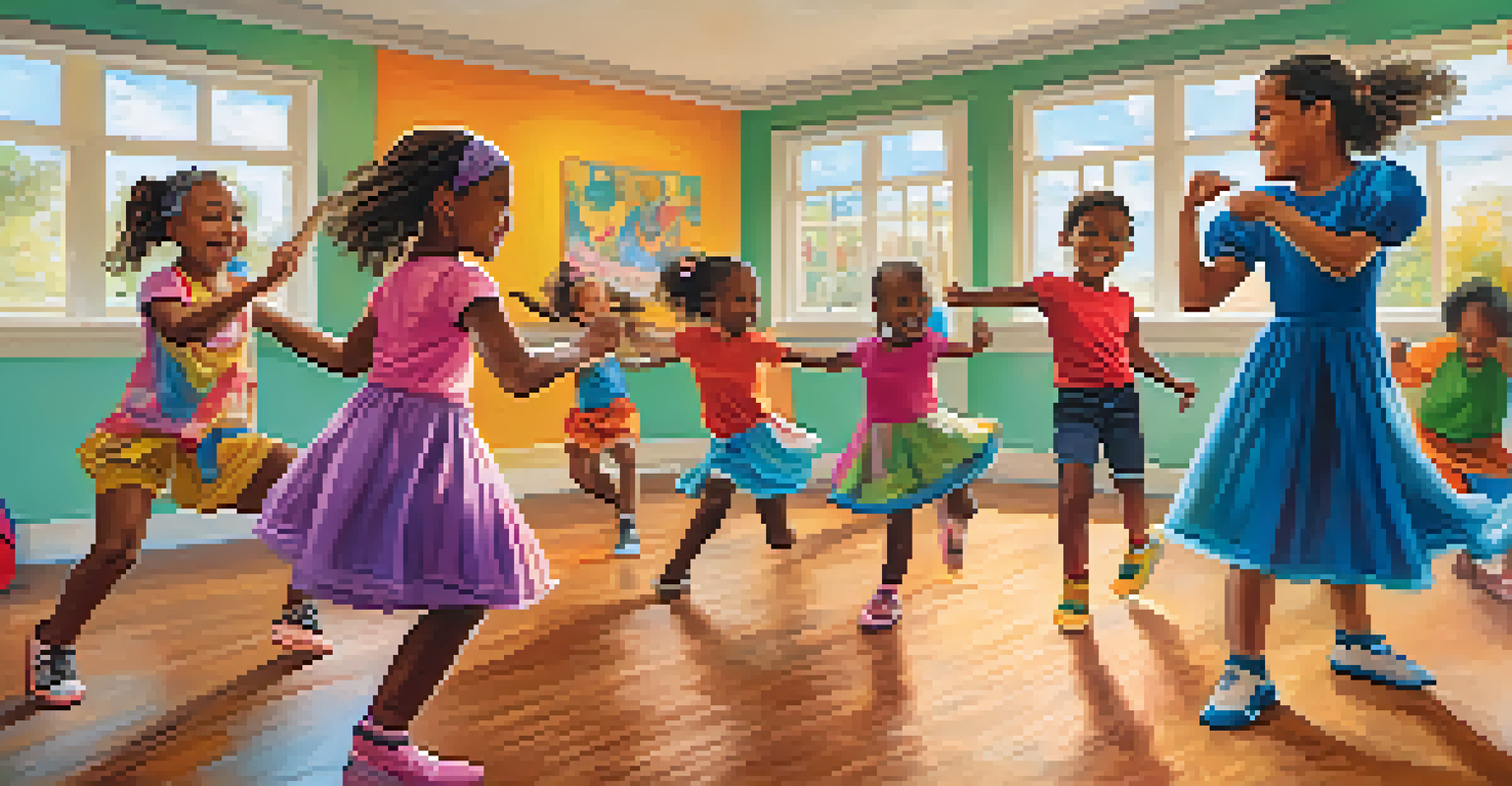Dance Therapy: A Global Approach to Mental Health and Wellness

Understanding Dance Therapy and Its Origins
Dance therapy, or dance/movement therapy (DMT), combines movement and psychotherapy to promote emotional, cognitive, and social integration. Originating in the 1940s, it emerged from the understanding that movement can express feelings that words sometimes cannot. This therapeutic approach recognizes that our bodies hold onto emotions, and through dance, we can release and process them more effectively.
Dance is the hidden language of the soul.
The practice is rooted in the belief that the mind and body are interconnected, and movement can serve as a catalyst for healing. For instance, a simple sway of the hips or a twirl can help individuals tap into their subconscious, revealing deeper emotions. This holistic approach is what sets dance therapy apart from traditional talk therapies, making it a unique tool for mental wellness.
Globally, dance therapy has evolved, incorporating various cultural dance styles and practices. From the expressive movements of African dance to the structured forms of ballet, each style brings its own benefits, making dance therapy a diverse and adaptable approach to mental health.
The Science Behind Dance Therapy's Impact
Research has shown that dance therapy can significantly reduce symptoms of anxiety, depression, and PTSD. When participants engage in dance, their bodies release endorphins, often referred to as 'feel-good' hormones. This biochemical response not only elevates mood but also enhances overall well-being, making dance therapy a fun yet effective treatment option.

Moreover, studies have highlighted that dance therapy improves brain function and connectivity. The rhythmic movements stimulate various areas of the brain, leading to increased creativity and cognitive flexibility. This can be especially beneficial for individuals recovering from trauma, as it encourages them to explore new ways of thinking and feeling.
Dance Therapy Enhances Emotional Health
Dance therapy promotes emotional expression and healing by allowing individuals to release feelings through movement.
In addition to its psychological benefits, dance therapy fosters social connections among participants. Engaging in group dance sessions creates a sense of community, which can be incredibly healing for those who feel isolated. The shared experience of movement can forge bonds, making participants feel understood and supported.
Cultural Variations in Dance Therapy Practices
Dance therapy is not a one-size-fits-all approach; it varies greatly across cultures, reflecting local traditions and practices. For example, in India, classical dance forms like Bharatanatyam are often used in therapy to promote self-expression and spiritual connection. These culturally rich practices allow individuals to connect with their heritage while pursuing mental wellness.
Movement is a medicine for creating change in a person's physical, emotional, and mental states.
In contrast, Western approaches may draw from contemporary dance or even hip-hop to engage younger audiences. These styles can resonate more with individuals familiar with urban culture, making therapy feel relatable and accessible. By incorporating familiar movements, therapists can create a comfortable space for self-exploration and healing.
This cultural adaptability not only enriches the therapeutic experience but also empowers individuals to embrace their identity. When dance therapy incorporates elements of a person's cultural background, it fosters a deeper connection to the practice, enhancing its effectiveness.
Dance Therapy for Children and Adolescents
Children and adolescents can particularly benefit from dance therapy, as it offers a playful outlet for their emotions. Young individuals often struggle to articulate their feelings verbally, and movement can provide a non-threatening way to express themselves. Through dance, they can explore their emotions, build confidence, and improve social skills.
For instance, in settings like schools or community centers, dance therapy programs have been implemented to address behavioral issues and foster teamwork. These programs encourage children to work together, express their feelings, and develop empathy for one another. Such initiatives not only enhance emotional intelligence but can also reduce bullying and promote inclusivity.
Cultural Diversity in Dance Therapy
Dance therapy adapts to various cultural practices, enriching therapeutic experiences and fostering personal identity.
Additionally, dance therapy can be a powerful tool for children dealing with trauma or loss. By encouraging creative movement, therapists can help them process their experiences in a safe environment. This can lead to healing and resilience, equipping them with coping strategies for future challenges.
Integrating Dance Therapy into Mental Health Care
With the growing recognition of dance therapy's benefits, there's an increasing demand for its integration into traditional mental health care. Mental health professionals are beginning to collaborate with dance therapists to create comprehensive treatment plans. This multidisciplinary approach ensures that clients receive well-rounded care tailored to their unique needs.
As dance therapy becomes more mainstream, training programs are emerging, equipping therapists with the skills needed to incorporate movement into their practices. These programs often emphasize the importance of understanding both psychological principles and the nuances of dance, creating a new generation of therapists who can bridge the gap between the two fields.
Moreover, integrating dance therapy in schools, hospitals, and rehabilitation centers is becoming more common. By making this form of therapy accessible, more individuals can experience its benefits, leading to improved mental health outcomes across communities.
Challenges and Limitations of Dance Therapy
While dance therapy offers numerous benefits, it also faces challenges that can limit its accessibility. One significant hurdle is the perception that individuals must possess dance skills to participate effectively. This misconception can deter those who feel they lack coordination or experience, but it's essential to emphasize that dance therapy is about expression, not perfection.
Additionally, finding qualified dance therapists can be challenging, as this field is still relatively niche compared to other therapeutic practices. Some regions may lack trained professionals, making it difficult for individuals to access this form of therapy. Increased awareness and training opportunities are critical to expanding the reach of dance therapy.
Future of Dance Therapy in Care
The integration of dance therapy into mainstream mental health care is growing, aided by advancements in accessibility and technology.
Lastly, the need for more research in this area remains a barrier. While there are promising studies, further rigorous research can help establish dance therapy's efficacy and expand its legitimacy within the mental health community. Continued advocacy and education can help overcome these challenges and promote wider acceptance.
The Future of Dance Therapy in Global Health
As mental health continues to gain attention worldwide, the future of dance therapy looks promising. With increasing awareness of its benefits, more organizations are beginning to incorporate dance therapy into their mental health initiatives. This shift reflects a growing recognition of the importance of holistic approaches to well-being.
Moreover, advancements in technology are opening new avenues for dance therapy. Virtual sessions and online workshops make it easier for individuals to access therapy from the comfort of their homes. This accessibility can particularly benefit those in remote areas or with mobility challenges, ensuring that dance therapy reaches a broader audience.

The global conversation around mental health is evolving, and dance therapy is becoming an essential part of that dialogue. As more people share their positive experiences and advocate for its integration into mental health care, we can expect to see continued growth and acceptance of dance therapy as a valuable tool for wellness.